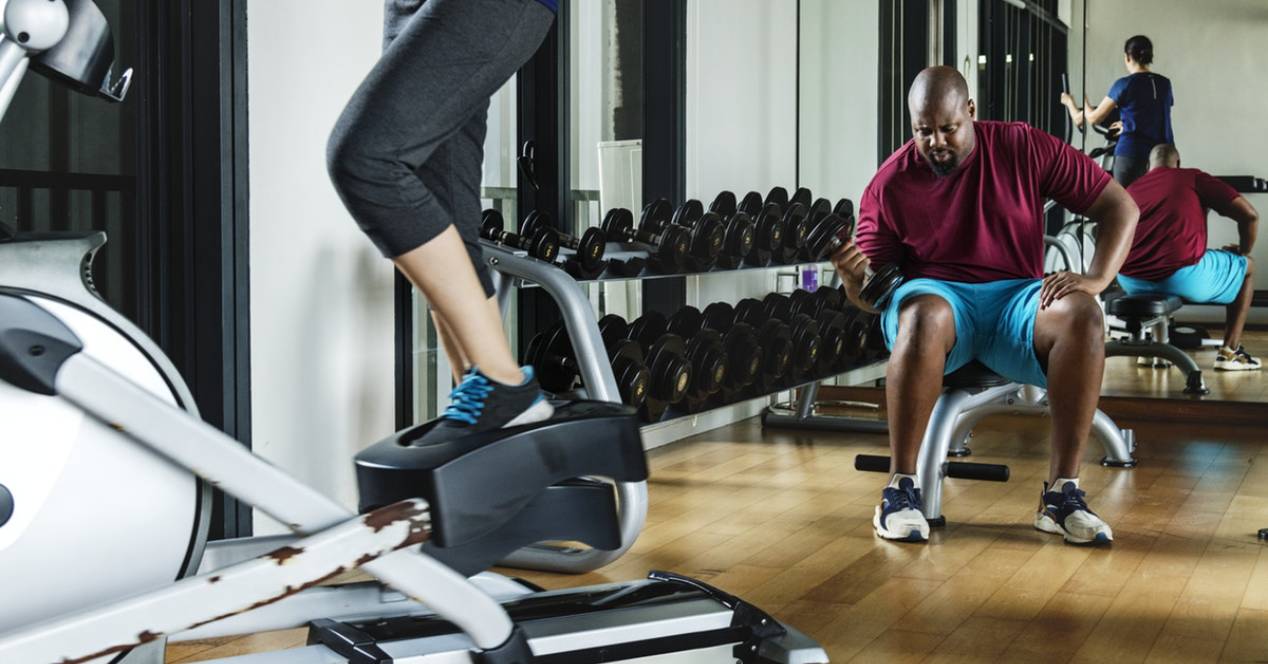
There are different causes that make you get away from your gym routine for a while. Maybe it's just a few days of vacation or maybe you're going through a flu that prevents you from getting out of bed. Whatever your case, it is normal that later you do not know how to resume your training. Can you pick up where you left off? What steps should you take to avoid injuring yourself?
How to return to training after being sick?
The symptoms of any illness usually keep you out of the gym for the duration of the illness. Once your symptoms start to fade, it's time to consider going back to the gym. Exercise can help you regain strength as you recover from illness.
El type of disease that you have plays a big role in when you can return to the gym. In general, exercise is still possible if you only have a mild cold, as long as you don't have a fever and don't cough a lot. However, if you have a contagious disease, stay away from the gym until the risk of transmitting germs has passed. A viral infection is likely to leave you with weak muscles, so your usual workout may be more difficult to complete when you exercise after the flu.
The specific symptoms you experience with the disease affect when you can return to the gym. You should always wait until the fever goes away to get back to exercising. Wait for other significant symptoms to pass, such as vomiting, diarrhea, abdominal cramps, severe coughing, general aches, or chills. For best results, wait until you start to feel an increase in your energy and muscle strength to complete a workout.
First training after illness
Your first workout back in the gym is the test of your body's strength after illness takes its toll, so proper nutrition and a warm-up help. Plan a shorter, lower intensity workout. A slower pace is less likely to make you feel worse or cause symptoms to return. If you experience dizziness, nausea, or pain, end the workout as soon as possible or slow down further. Take the day off from the gym to give your body more recovery time.
If your workouts involve intense activities, you should allow time to return to your previous intensity level. As a general rule, your period of reduced intensity exercise should last from two to three days for each sick day. For example, if your cold persisted for five days, you should take 10-15 days to recover the intensity of your previous training. Start with an easy level workout that lasts 20 to 30 minutes; then increase your time to five to 10 minutes a day for the first week.
You can slowly increase the intensity with each workout, paying close attention to your body for signs that you're working too hard. If you are recovering from a serious illness, your strength may vary from day to day.
How to recover the routine after a vacation or rest time?
Fortunately, there are a few ways to make the transition much smoother, even fun, when it comes to coming back from vacation. Consider your break as a reason to reaffirm your goals, take advantage of your needs and go to the gym feeling more refreshed than ever.
Consider what your body needs
Do you miss the sore feeling after an intense weight lifting session? Craving yoga after a stressful time in lockdown? Now is a good time to think about what your body needs and set new goals if necessary.
Start with smaller steps
If you were logging an hour in the gym each day, but now you're not ready to work out for even five minutes, don't prepare to fail with the unrealistic expectation of doing an hour-long workout every day for the next seven days. You're better off taking small steps to motivate yourself during those workouts.
As you get back into your routine, don't worry too much about getting back to where you left off. Start with shorter sessions for a week or two, even 10-20 minutes.
Redial intensity
It can be tempting to pick up right where you left off, but chances are you'll feel better, stronger, and less overwhelmed if you level up.
Once you get back out of the gym, start by subtracting 1-2 sets from usual (depending on the volume of your training program) and lifting lighter weights. By getting back to your routine, you'll be up to full speed in no time, with much less fatigue.
Set training dates
If you simply say: "I'll go three times this week when I get the chance.", it will not happen. Instead, you should treat your workouts like a doctor's appointment or a meeting with a client, and write them down on your calendar. Although there is nothing magical about it, sometimes choosing a Monday, or any day, feels easier. This will also help establish a routine where getting back to the gym is a natural part of your day once again.
visualize yourself in the future
Visualization can be a great tool to boost motivation. That means visualizing yourself kicking some butt in the gym, getting a great time on your next long run, or finally nailing the crow pose.
A study in Psychiatric Annals showed that athletes who used imagery techniques when training improved their performance during workouts. Plus, by thinking about the end goal and how amazing you'll feel, you'll be motivated to get in the gym and make that vision a reality in the first place.